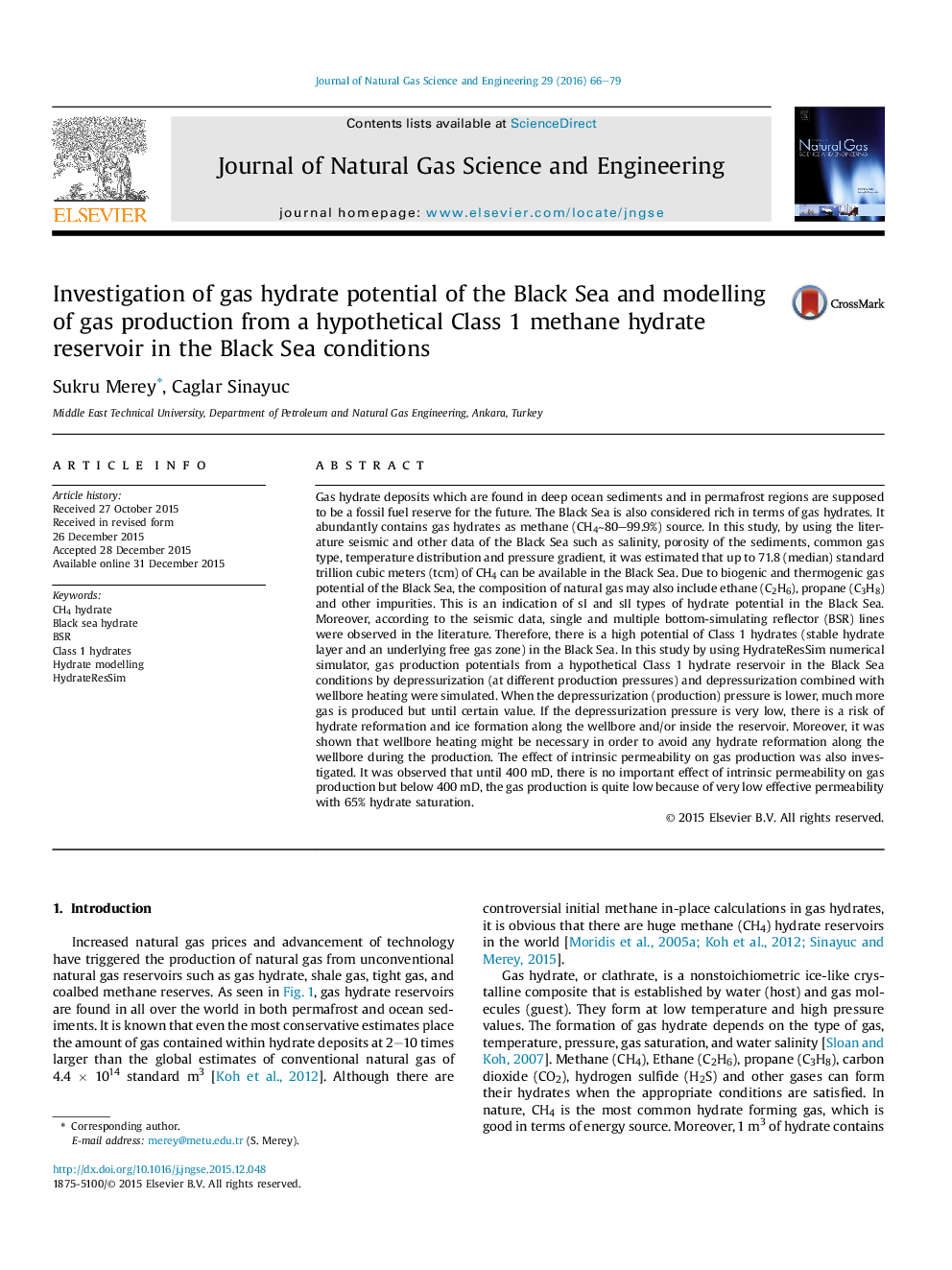| کد مقاله | کد نشریه | سال انتشار | مقاله انگلیسی | نسخه تمام متن |
|---|---|---|---|---|
| 1757340 | 1523012 | 2016 | 14 صفحه PDF | دانلود رایگان |
عنوان انگلیسی مقاله ISI
Investigation of gas hydrate potential of the Black Sea and modelling of gas production from a hypothetical Class 1 methane hydrate reservoir in the Black Sea conditions
ترجمه فارسی عنوان
بررسی پتانسیل هیدرات گاز دریای سیاه و مدل سازی تولید گاز از یک مخزن هیدرات متان کلاس 1 در شرایط دریای سیاه
دانلود مقاله + سفارش ترجمه
دانلود مقاله ISI انگلیسی
رایگان برای ایرانیان
کلمات کلیدی
موضوعات مرتبط
مهندسی و علوم پایه
علوم زمین و سیارات
علوم زمین و سیاره ای (عمومی)
چکیده انگلیسی
Gas hydrate deposits which are found in deep ocean sediments and in permafrost regions are supposed to be a fossil fuel reserve for the future. The Black Sea is also considered rich in terms of gas hydrates. It abundantly contains gas hydrates as methane (CH4â¼80-99.9%) source. In this study, by using the literature seismic and other data of the Black Sea such as salinity, porosity of the sediments, common gas type, temperature distribution and pressure gradient, it was estimated that up to 71.8 (median) standard trillion cubic meters (tcm) of CH4 can be available in the Black Sea. Due to biogenic and thermogenic gas potential of the Black Sea, the composition of natural gas may also include ethane (C2H6), propane (C3H8) and other impurities. This is an indication of sI and sII types of hydrate potential in the Black Sea. Moreover, according to the seismic data, single and multiple bottom-simulating reflector (BSR) lines were observed in the literature. Therefore, there is a high potential of Class 1 hydrates (stable hydrate layer and an underlying free gas zone) in the Black Sea. In this study by using HydrateResSim numerical simulator, gas production potentials from a hypothetical Class 1 hydrate reservoir in the Black Sea conditions by depressurization (at different production pressures) and depressurization combined with wellbore heating were simulated. When the depressurization (production) pressure is lower, much more gas is produced but until certain value. If the depressurization pressure is very low, there is a risk of hydrate reformation and ice formation along the wellbore and/or inside the reservoir. Moreover, it was shown that wellbore heating might be necessary in order to avoid any hydrate reformation along the wellbore during the production. The effect of intrinsic permeability on gas production was also investigated. It was observed that until 400 mD, there is no important effect of intrinsic permeability on gas production but below 400 mD, the gas production is quite low because of very low effective permeability with 65% hydrate saturation.
ناشر
Database: Elsevier - ScienceDirect (ساینس دایرکت)
Journal: Journal of Natural Gas Science and Engineering - Volume 29, February 2016, Pages 66-79
Journal: Journal of Natural Gas Science and Engineering - Volume 29, February 2016, Pages 66-79
نویسندگان
Sukru Merey, Caglar Sinayuc,
